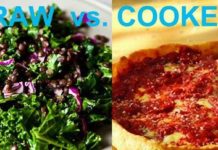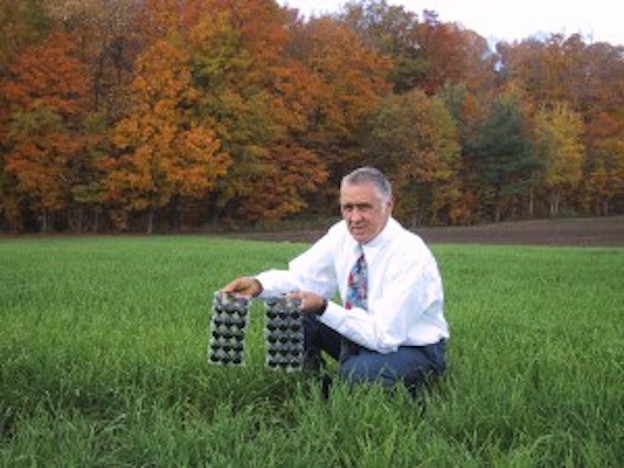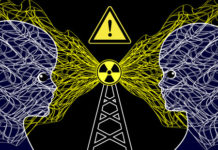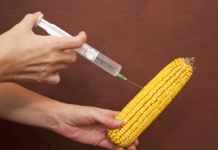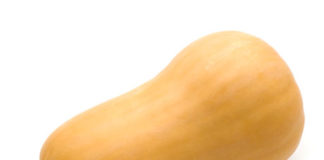Every day major media outlets publish stories of men and women dramatically transforming their lives with an amazing medical breakthrough thousands of years in the making — CBD Oil. In fact, back in 1977 Carl Sagan suggested that marijuana may have been the world’s first agricultural crop — which actually led to the development of civilization itself:
“It would be wryly interesting if in human history the cultivation of marijuana led generally to the invention of agriculture, and thereby to civilization.”
— Carl Sagan, The Dragons of Eden, Speculations on the Origin of Human Intelligence, p.191
“a modern version of something that’s gone on for 10,000 years that we know of. None of this is new. Not even vaporizers are new. The first vaporizer that we know of was 2,500 years ago.”
– Chris Kilham, world-famous expert
in plant-based medicinals
A taste of the history of cannabis:
- 2,737 BCE First recorded use of cannabis as medicine by Emperor Shen Neng of China.
- 2,000-800 BCE Bhang (dried cannabis) is mentioned in the Hindu Atharvaveda as one of the five sacred healing plants of India.
- 1533 King Henry VIII fines farmers who don’t raise hemp.
1563 Portuguese physician Garcia da Orta reported marijuana’s medicinal effects.
1621 Burton’s Anatomy of Melancholy suggested marijuana for treating depression.
1764 Medical marijuana appears in The New England Dispensatory.
1800 Marijuana plantations flourished in Mississippi, Georgia, California, South Carolina, Nebraska, New York and Kentucky. - 1916 The USDA reports that one acre of hemp can produce as much pulp for paper as 4.1 acres of trees using as little as just 1/7th as much polluting chemicals and none of the dioxin or chlorine contamination used for making paper.
- 1936 The American film Reefer Madness was made to frighten American youth away from using Cannabis.
- 1937 Congress passes the Marijuana Tax Act, criminalizing cannabis. Dr. William C. Woodward (AMA) warns that this act, “loses sight of the fact that future investigation may show that there are substantial medical uses for Cannabis.” William Randolph Hearst, tied to the timber industry, made sure his comments were ignored.
Today, CBD oil, derived from cannabis, is not just for people fighting cancer or suffering from seizures. There are literally thousands of scientific studies proving the effectiveness of CBD for dozens of different ailments.
Approx. 10,000 Scientific Studies Have Shown CBD Oil’s Benefits.
Your body is actually designed to naturally produce cannabinoids, called “endogenous cannabinoids.” These are a vital part of how cells communicate and regulate the body’s systems. This recently discovered system in your body called the “Endocannabinoid” system. In thousands of studies worldwide, CBD oil has been shown to be an effective treatment for many ailments.
- Anxiety Relief – Our dependence on anxiety meds like Xanax, Valium and Ativan has reached epidemic proportions. CBD oil has been shown to reduce anxiety in patients with social anxiety disorder and may also be effective for panic disorder, obsessive compulsive disorder and post-traumatic stress disorder.
- Anti-Inflammatory – Drugs like Tylenol and Advic can have harsh physical side effects like ulcers, liver damage and internal bleeding. Opiate-based painkillers like Vicodin and hydrocodone threaten even bigger epidemics of addiction. Chronic inflammation is linked to cancer, heart disease, diabetes, rheumatoid arthritis, neurodegenerative disorders like Alzheimer’s and many others. Research has shown that CBD oil significantly suppresses chronic inflammatory and neuropathic pain.
- Reduces Seizures – A 2014 study at Stanford University showed outstanding results using cannabidiols to treat kids with epilepsy (the average number of anti-epileptic drugs needed before using CBD was 12). Other beneficial effects included increased alertness, better mood and improved sleep. A 2013 study in the Journal of Epilepsy and Behavior, children on anti-seizure drugs were given CBD instead and reported reduced seizures as well as increased alertness, improved mood and better sleep.
- Diabetes Prevention – Almost 50% of the U.S has diabetes or shows some symptoms. This also puts you at greater risk for heart disease, kidney failure, nerve damage and many other disorders. Studies have shown that CBD reduces the risk of diabetes in mice. The incidence dropped from 86% in non-treated mice to 30% in CBD-treated mice.
- Combats Cancer Cells – An NCI (National Cancer Institute) press release stated that cannabinoids may be able to kill cancer cells and protect normal cells.
- Decreases Pain – The science of CBD for relieving pain goes back to the 1890’s. CBD has profound nerve-protective and brain-enhancing properties, as well as an anti-anxiety effect.
- Reduce Oxidative Stress and Inflammation – A study in The Journal of the American College of Cardiology reported a significant reduction in the intensity of heart conditions, oxidative stress, inflammation and cell death.
- Helps Get Rid Of Stiffness – A study of 160 patients suffering from spasticity, spasms, bladder problems, tremor or pain reported a significant decrease in symptoms.
- Nausea – CBD helps relieve nausea and vomiting reliever, much as marijuana itself has been for eons. A 2012 report in the British Journal of Pharmacology found that CBD benefits included anti-nausea and antiemetic effects, such as with motion sickness or the side effects of chemotherapy.
- Neurodegerative Diseases – CBD prevented the toxic effects of neurotransmitter glutamate and radical oxygen species (ROS) in the brain. CBD has more antioxidant activity than Vitamin C or Vitamin E. It may also protect brain cells from beta-amyloid toxicity, making it a potential therapy for Alzheimer’s and Parkinson’s. Due to its anti-inflammatory and antioxidant properties CBD, may be promising for treating Amyotrophic Lateral Sclerosis (ALS) patients.
- May Relieve Multiple Sclerosis – CBD may help relieve symptoms of multiple sclerosis. CBD with THC is effective for treating muscle tightness, pain, sleep disturbances and incontinence in people with multiple sclerosis.
- Schizophrenia – CBD improves the symptoms of schizophrenia, though the mechanism of action is unknown. Studies suggest that CBD has a pharmacological effect similar to some anti-psychotic drugs but with fewer side effects.
- Epileptic Seizures – CBD may be promising for treatment-resistant epilepsy. In one survey, 84% of parents reported a reduction in their child’s seizure frequency while taking CBD, and the children also experienced increased alertness, better mood and improved sleep. After 3 months, 39% of children with treatment-resistant epilepsy had more than a 50% reduction in seizures.
The potential of CBD oil is so large that the US government, yes, the United States Government holds a patent (#6,630,507) around it’s benefits.
 * CBD oil is now legal in all of the 50 U.S. states. It has no psychoactive effects and is totally safe.
* CBD oil is now legal in all of the 50 U.S. states. It has no psychoactive effects and is totally safe.
Suggested Media
CBD-Rich Hemp Oil: Cannabis Medicine Is Back
Authors: Steven Leonard-johnson, Tina Rappaport, Steven Leonard-Johnson, R.N. PhD
Publisher: Createspace Independent Pub, 2014
ISBN: 1499533357, 9781499533354
Subjects: Medical › Holistic Medicine
Cannabis: Evolution and Ethnobotany
Authors: Robert Clarke, Mark Merlin
Publisher: University of California Press, 2013
ISBN: 0520954572
Subjects: History, Evolution and Ethnobotany
Cannabinoids—Advances in Research and Application: 2013 Edition: ScholarlyBrief
Authors: Ashton Acton, PhD
ISBN: 9781481698306
Subjects: Medical › Pharmacology
CBD & CLINICAL ENDOCANNABINOID DEFICIENCY
By: Dr. Ethan Russo
https://www.projectcbd.org/dr-ethan-russo-cbd-clinical-endocannabinoid-deficiency
CBD oil: Uses, health benefits, and risks
By: Jon Johnson, Pier reviewed by: Debra Rose Wilson, PhD, MSN, RN, IBCLC, etc.
http://www.medicalnewstoday.com/articles/317221.php
CBD Healthcare News
Dr. Christina Sanchez, Molecular Biologist, Compultense Univ., Madrid, Spain.
https://youtu.be/5RtRil2ND-E
SolCBD 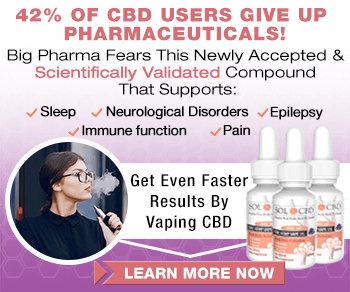
One great pace to start is with SolCBD – terrific, one-of-a-kind, organic CBD products. I like SolCBD’s vape product — the best liquid vape I’ve found. It contains CO2 extracted CBD derived from hemp, with all the important phytonutrients, enzymes & vitamins — in a vegetable glycerin base, so there’s never any propylene glycol.
IrieCBD
IrieCBD are all made in the U.S. using pure, raw, industrial hemp grown on their own farms. All their formulas are tested by independent labs to assure the highest standards. Their extracts are made from sustainably grown hemp without any toxic chemicals like pesticides and herbicide using a Super-critical CO2 extraction process that reproduces the phytochemical profile of the original hemp plants.
Suggested References
- Rajesh et al. “Cannabidiol attenuates high glucoseinduced endothelial cell inflammatory response and barrier disruption.” Am J Physiol Heart Circ. Physiol. 293.1 (2007): H610-H619.
- Volkow, Nora D. “Cannabidiol: Barriers to Research and Potential Medical Benefits.” Drug Caucus Hearing on Barriers to Cannabidiol Research, United States Senate Caucus on International Narcotics Control. June 24, 2015 Retrieved from
https://www.drugabuse.gov/about-nida/legislative-activities/testimony-to-congress/2016/biology-potential-therapeutic-effects-cannabidiol - Ligresti et al. “Antitumor activity of plant cannabinoids with emphasis on the effect of cannabidiol on human breast carcinoma.” J Pharmacol Exp Ther 318.3 (2006): 1375-1387.
- García-Arencibia et al. “Evaluation of the neuroprotective effect of cannabinoids in a rat model of Parkinson’s disease: importance of antioxidant and cannabinoid receptor-independent properties.” Brain Res 1134.1 (2007): 162-170.
- Massi et al. “Antitumor effects of cannabidiol, a nonpsychoactive cannabinoid, on human glioma cell lines.” J Pharmacol Exp Ther 308.3 (2004): 838-845.
- McAllister et al. “The Antitumor Activity of Plant-Derived Non-Psychoactive Cannabinoids.” J Neuroimmune Pharmacol 10.2 (2015): 255-267.
- Esposito et al. “The marijuana component cannabidiol inhibits beta-amyloid-induced tau protein hyperphosphorylation through Wnt/beta-catenin pathway rescue in PC12 cells.” J Mol Med (Berl) 84.3 (2006): 253-258.
- Martín-Moreno et al. “Cannabidiol and other cannabinoids reduce microglial activation in vitro and in vivo: relevance to Alzheimer’s disease.” Mol Pharmacol 79.6 (2011): 964-973.Iuvone et al. “Neuroprotective effect of cannabidiol, a non-psychoactive component from Cannabis sativa, on beta-amyloid-induced toxicity in PC12 cells.” J Neurochem 89.1 (2004): 134-141
- Pazos et al. “Mechanisms of cannabidiol neuroprotection in hypoxic-ischemic newborn pigs: role of 5-HT1A and CB2 receptors.” Neuropharmacology 71 (2013): 282-291.
- Hampson et al. “Cannabidiol and (-)Delta9-tetrahydrocannabinol are neuroprotective antioxidants.” Proc Natl Acad Sci USA 95.14 (1998): 8268-8273.
- Pryce et al. “Neuroprotection in Experimental Autoimmune Encephalomyelitis and Progressive Multiple Sclerosis by Cannabis-Based Cannabinoids.” J Neuroimmune Pharmacol 10.2 (2015): 281-292.
- [Zuardi et al. “Effect of cannabidiol on plasma prolactin, growth hormone, and cortisol in human volunteers.” Braz J of Med and Biol Res 26.2 (1993): 213–217.
- Malfait et al. “The nonpsychoactive cannabis constituent cannabidiol is an oral anti-arthritic therapeutic in murine collagen-induced arthritis.” Proc Natl Acad Sci USA 97.17 (2000): 9561-9566.
- Costa et al. “Oral anti-inflammatory activity of cannabidiol, a nonpsychoactive constituent of cannabis, in acute carrageenan-induced inflammation in the rat paw.” Naunyn Schmiedebergs Arch Pharmacol 369.3 (2004): 294-299.
- Costa et al. “The nonpsychoactive cannabis constituent cannabidiol is an orally effective therapeutic agent in rat chronic inflammatory and neuropathic pain.” Eur J Pharmacol. 556.1-3 (2006): 75-83.
- Di Marzo, Vincenzo and Diego Centonze. ‘Placebo effects in a multiple sclerosis spasticity enriched clinical trial with the oromucosal cannabinoid spray (THC/CBD): dimension and possible causes.” CNS Neurosci Ther. 21.3 (2015): 215-21.
- Flachenecker et al. “Nabiximols (THC/CBD oromucosal spray, Sativex®) in clinical practice–results of a multicenter, non-interventional study (MOVE 2) in patients with multiple sclerosis spasticity.” Eur Neurol. 71.5-6 (2014): 271-279.
- Porter, Brenda E. and Catherine Jacobson “Report of a parent survey of cannabidiol-enriched cannabis use in pediatric treatment-resistant epilepsy.” Epilepsy & Behavior 29 (2013) 574–577.
- Cunha et al. “Chronic administration of cannabidiol to healthy volunteers and epileptic patients.” Pharmacology 21.3 (1980): 175-185.
- Parker et al. “Cannabidiol, a nonpsychoactive component of cannabis and its synthetic dimethylheptyl homolog suppress nausea in an experimental model with rats.” Neuroreport. 13.5 (2002): 567-570.
- Weiss et al. “Cannabidiol lowers incidence of diabetes in non-obese diabetic mice.” Autoimmunity. 39.2 (2006): 143-151.
- Schier et al. “Cannabidiol, a Cannabis sativa constituent, as an anxiolytic drug.” Rev Bras Psiquiatr, 34.1 (2012): 104-110.
- Porter, Brenda E. and Catherine Jacobson. “Report of a parent survey of cannabidiol-enriched cannabis use in pediatric treatment-resistant epilepsy.” Epilepsy & Behavior 29.3 (2013): 574–577.
- Lee, Martin A. “CBD Misconceptions.” Project CBD. February 18, 2015. Accessed October 28, 2016. https://www.projectcbd.org/article/cbd-misconceptions.
- Russo, Ethan B. “Taming THC: potential cannabis synergy and phytocannabinoid-terpenoid entourage effects.” Br J Pharmacol. 163.7 (2011): 1344-1364.
- Fusar-Poli et al. “Distinct effects of delta-9-tetrahydrocannabinol and cannabidiol on neural activation during emotional processing.” Arch Gen Psychiatry 66.1 (2009): 95-105.
- https://www.ncbi.nlm.nih.gov/pmc/articles/PMC2751428/
- https://www.ncbi.nlm.nih.gov/pubmed/8730919
- https://www.ncbi.nlm.nih.gov/pubmed/16258853
- https://www.ncbi.nlm.nih.gov/pmc/articles/PMC1949344https://www.ncbi.nlm.nih.gov/pubmedhealth/PMH0025286/
- https://www.ncbi.nlm.nih.gov/pubmed/17355549
- https://www.ncbi.nlm.nih.gov/pubmed/17437545
- http://www.tandfonline.com/doi/abs/10.1080/13543784.2016.1236913
- https://www.ncbi.nlm.nih.gov/pmc/articles/PMC5009497/
- https://www.ncbi.nlm.nih.gov/pubmed/17712814
- https://www.ncbi.nlm.nih.gov/pmc/articles/PMC4458548/
- https://www.ncbi.nlm.nih.gov/pubmed/9858061
- https://www.ncbi.nlm.nih.gov/pmc/articles/PMC20965/



